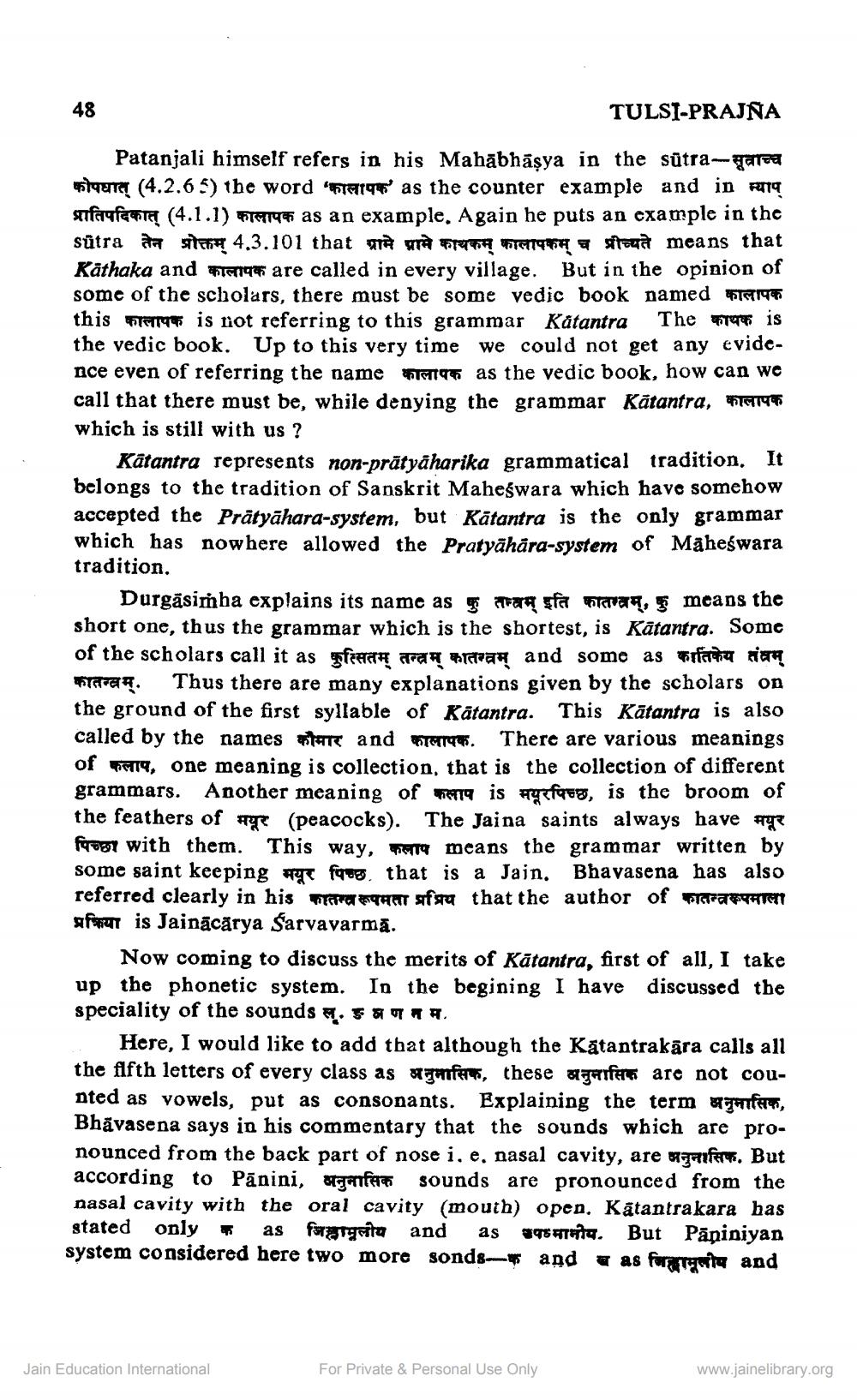________________
TULSI-PRAJNA
Patanjali himself refers in his Mahābhāṣya in the sutraकोपधात् (4.2.65) the word 'कालापक' as the counter example and in म्याप् प्रातिपदिकात् (4.1.1) कालापक as an example. Again he puts an example in the sūtra तेन प्रोक्तम् 4.3.101 that ग्रामे प्रामे काथकम् कालापकम् च प्रोच्यते means that Kathaka and are called in every village. But in the opinion of some of the scholars, there must be some vedic book named this is not referring to this grammar Katantra The कायक is the vedic book. Up to this very time we could not get any evidence even of referring the name as the vedic book, how can we call that there must be, while denying the grammar Katantra, which is still with us?
48
Kätantra represents non-prätyäharika grammatical tradition. It belongs to the tradition of Sanskrit Maheswara which have somehow accepted the Prätyāhara-system, but Kātantra is the only grammar which has nowhere allowed the Pratyahāra-system of Maheswara tradition.
Durgāsimha explains its name as कु तन्त्रम् इति कातन्त्रम्, कु means the short one, thus the grammar which is the shortest, is Katantra. Some of the scholars call it as कुत्सितम् तन्त्रम् कातन्त्रम् and some as कार्तिकेय तंत्रम् कातन्त्रम्. Thus there are many explanations given by the scholars on the ground of the first syllable of Katantra. This Kätantra is also called by the names कौमार and कालापक. There are various meanings of, one meaning is collection, that is the collection of different grammars. Another meaning of कलाप is मयूरपिच्छ, is the broom of the feathers of (peacocks). The Jaina saints always have frost with them. This way, means the grammar written by some saint keeping f. that is a Jain. Bhavasena has also referred clearly in his कातन्त्र रूपमता प्रप्रिय that the author of कातन्त्ररुपमाला af is Jainacarya Sarvavarmā.
Now coming to discuss the merits of Katantra, first of all, I take up the phonetic system. In the begining I have discussed the speciality of the sounds.¶¶¶
Here, I would like to add that although the Katantrakāra calls all the fifth letters of every class as अनुमासिक, these अनुनासिक are not cou nted as vowels, put as consonants. Explaining the term अनुमासिक, Bhavasena says in his commentary that the sounds which are pronounced from the back part of nose i. e, nasal cavity, are f. But according to Panini, agafa sounds are pronounced from the nasal cavity with the oral cavity (mouth) open. Katantrakara has stated only as जिह्वामूलीय and as उपमानीय. But Papiniyan system considered here two more sonds and as forget and
Jain Education International
For Private & Personal Use Only
www.jainelibrary.org




